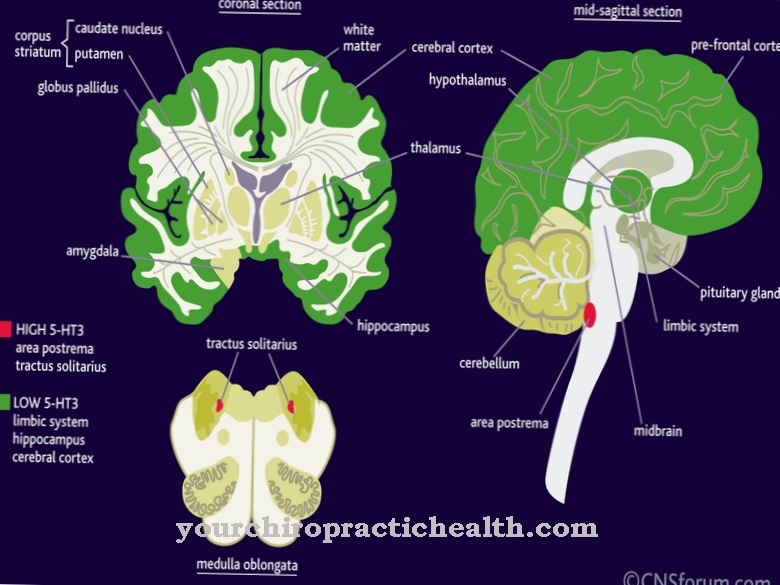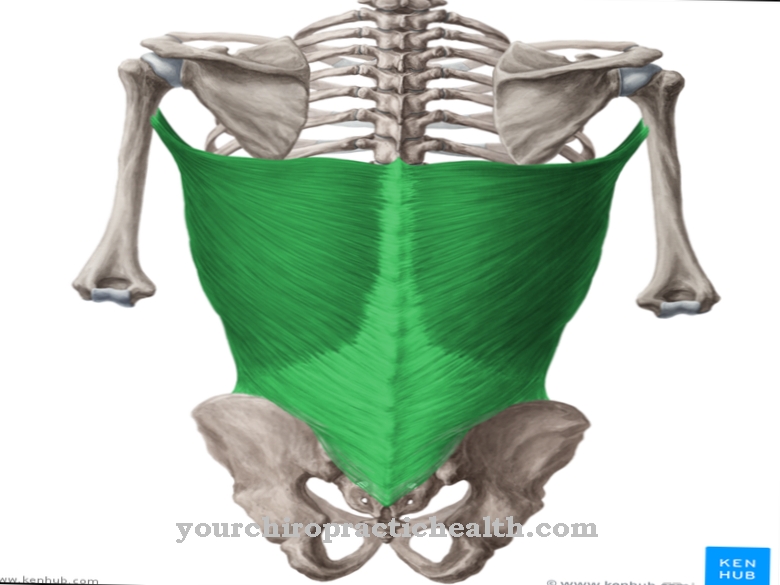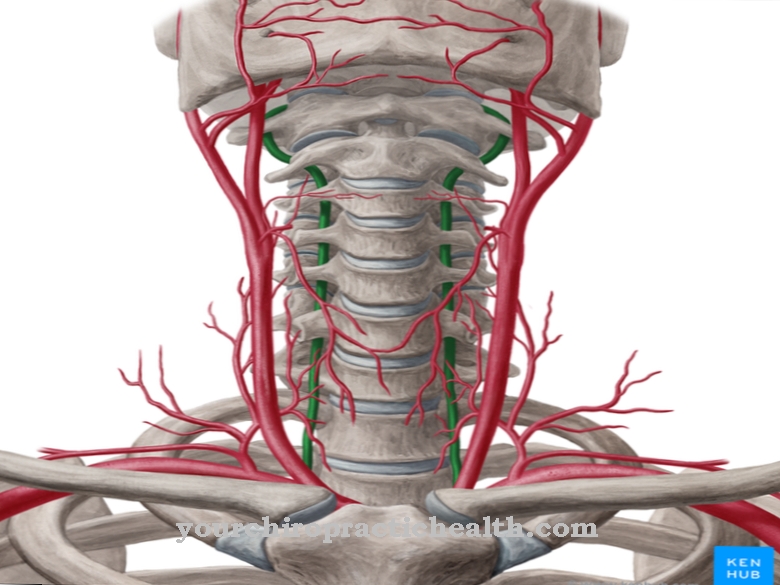The most important production facilities for the female reproductive organs include the Ovaries (ovaries). They are responsible for the formation of egg cells and female sex hormones.
What are ovaries?

The Ovaries are an internal sex organ of the female body. Every woman has two ovaries. The ovaries are also part of the reproductive organs. Without them, pregnancy would not be possible.
Therefore, some women consider an ovariectomy (removal of the ovary) as a method of contraception, usually after they have finished having children. However, this serious procedure can lead to further complications and should be discussed in detail with a specialist (gynecologist).
In medicine they are called the ovary (Latin) or the oophoron (ancient Greek). Similar to the male testicles, they are responsible for the production of egg cells and female sex hormones.
Anatomy & structure
The Ovaries are covered by a single layer of epithelial tissue. It is a smoothly lined tissue with a transition to the white connective tissue capsule directly below it. The tissue of the ovaries consists of the outer cortex and the inner medulla.
The cortex of the ovaries contains the egg cells, which are located in follicles. Follicles are spherical follicles in the ovaries that reach various stages of maturity. For a long time it was assumed that women were born with a limited number of eggs and that women would become sterile after all of them had been used up. American researchers demonstrated in 2012 that the stem cells for egg production are located in the ovaries.
The ovarian marrow is made up of connective tissue and contains the lymphatic vessels, nerve fibers, and blood vessels of the ovarian nerve plexus.
The location of the ovaries is in the pelvis, on the common iliac artery at the level of the bifurcation of the main artery. They can be easily felt with two fingers, one through the vagina, the other through the abdominal wall. Adjacent organs are the ureter, the appendix (located to the right ovary) and the lumbar plexus nerve. The ovaries are held in place by three ligaments, which are also made of smooth epithelial tissue.
The ovaries are supplied with blood by the ovarian artery. The ovarian artery comes straight from the main artery. The blood is drained through the ovarian vein. Fibers of the vegetative nervous system form a network of nerves and take over the nerve supply.
Functions & tasks
The Ovaries produce the egg cells and sex hormones. The egg cells formed in the ovary are expelled every month during sexual maturity. This is known as ovulation (ovulation).
Other tasks of the ovaries are the production and secretion of female sex hormones. The hormones progesterone and estrogen are important for secondary sexual characteristics such as the female breast and the menstrual cycle. Egg cells are no longer produced after menopause.
Diseases

Like all other organs, the Ovaries get sick. The cause of inflammation of the ovaries (oopheritis) is usually a vaginal infection, whereby germs get into the ovaries and cause inflammation. When inflammation affects the fallopian tubes as well as the ovaries, this is known as adnexitis. Severe pain in the lower abdomen and fever indicate such a disease.
Various tumors can affect the ovaries. There is a malignant tumor, ovarian cancer (ovarian cancer), and benign tumors, such as goiter ovarii and Brenner tumor. Fibromas can occur in the ovaries, usually caused by ascites (Meigs syndrome).
Cystomas are called glandular tumors in which a cavity filled with secretion forms. The exact causes of ovarian cancer are still unclear. One suspects primarily hormonal reasons or family predispositions. It is claimed that birth control pills and pregnancy can reduce the risk of ovarian cancer by up to 60 percent.
Symptoms such as abdominal pain and pain in the bladder and bowel area are only non-specific. This is why ovarian cancer is often diagnosed late. As a rule, an operation is necessary in which the ovaries, including the uterus and fallopian tubes, are removed.
The gonads can be underactive (hypogonadism). Malfunction of the ovaries is polycystic ovarian syndrome and ovarian cysts. If the ovaries are not functioning properly, one speaks of ovarian insufficiency. The ovaries are no longer able to carry out their tasks. This leads, for example, to irregular menstrual periods, intermenstrual bleeding or the absence thereof. Infertility is also possible.
The simultaneous presence of testicular tissue in the gonads of the ovaries is called ovotestis. If the system is missing during the development of the embryo, it is called agonadism or gonadal dysgenesis. The dermoid cyst is a malformation of the embryo. This creates a cavity that is lined with epidermal tissue.
Typical & common diseases
- Ovarian cyst
- Inflammation of the fallopian tubes and ovaries
- Polycystic ovarian syndrome (polycystic ovary syndrome)
- Ectopic pregnancy












.jpg)



.jpg)










.jpg)
